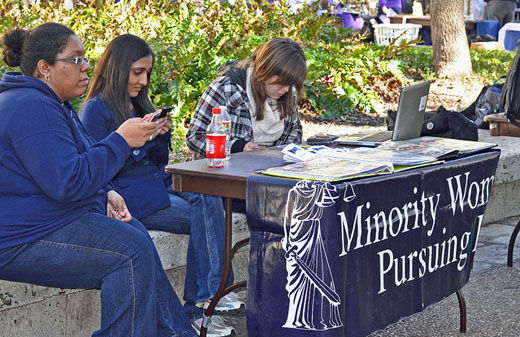
History repeats itself: the first time as tragedy, the second time as farce, as Karl Marx famously said. So it goes for the Supreme Court case on affirmative action and campus diversity, Fisher v. University of Texas.
Sixty-two years ago, the University of Texas law school went to the Supreme Court to defend its use of race in admissions. Back then, the university used race to uphold Jim Crow segregation, the legal justification for keeping Black Americans as second-class citizens. The university’s lawyers argued its admissions policies upheld the law, based on the now-discredited Plessy v. Ferguson “separate but equal” doctrine.
A Black postal worker from Houston, Heman Sweatt, challenged that tragic history of legal segregation and racism by taking the university to court. Sweatt had been barred entrance into the university’s law school because of his race. The suit worked its way up the legal chain, finally reaching the Supreme Court in 1950, where a young Thurgood Marshall argued the case with an NAACP co-counsel. The high court’s decision, which said in part that Sweatt was not afforded an “equal” graduate education since the university’s law school for Blacks was woefully understaffed and resourced, became a legal keystone for the 1954 groundbreaking Brown v. Board of Education decision.
Some 60 years later, Abigail Fisher, a white woman, sued the University of Texas alleging she had been denied undergraduate entrance because of her race. “Less qualified” Black students were admitted, she claimed.
The university argues Fisher fell short of its academic standards, and race had nothing to do with it.
There were five Black and Hispanic students and 42 white students with lower academic scores than Fisher’s who were admitted, according to a blogger at EdMedia. But there were also 168 Black and Hispanic students with higher academics than Fisher who were not admitted.
Fisher’s case seems a farcical characterization of racial discrimination. It continues the ultra-right’s attack on affirmative action by using its “reverse discrimination” ideology, which turns actual discrimination on its head.
What discrimination did Fisher suffer? She wasn’t accepted into her top college choice. But she had choices and still got a degree from Louisiana State University. Apparently, for Fisher, LSU doesn’t measure up to UT’s prestige. Plus, she said, she couldn’t continue her “family tradition” of attending UT. Sorry, but that doesn’t sound like discrimination. Sounds like scapegoating and sour grapes. It’s not like she needed the National Guard to escort her to enter LSU.
When Sweatt or James Meredith or Elizabeth Eckford and thousands of others acted to knock down racial segregation in education, they were also weakening the walls of gender, class, sexual orientation, disability and other forms of discrimination. They were expanding democracy and opportunity for all. They were laying the basis for future democratic struggles, including movements for marriage equality and immigration reform.
Yet even with progress made, campuses still are more white than racially diverse. Businesses, high-ranking former military officers and the U.S. government have joined with colleges and civil rights groups in support of UT’s use of race as one positive factor in its “holistic” admission process because they – or the institutions they represent – benefit from such equality and diversity policies. The Supreme Court even said as much in a 2003 decision on a similar case.
Why the court decided to hear the Fisher case has more to do with ideology and politics than legal arguments. University of Houston history professor Gerald Horne, who authored “Reversing Discrimination: The Case for Affirmative Action,” said via email, “If the court follows the law, they will rule against Fisher for they cannot prescribe a remedy for her since she has graduated already from college. U.S. law says the high court must not rule on abstract propositions but on behalf of actual litigants with the possibility of real remedies.”
However, Horne said, “the high court has been dominated by conservatives for some years and their constituency is furious because of their upholding the Affordable Care Act. Hence, one should not be surprised if the court chooses not to follow the law in this case in order to reassure conservatives of their fealty to the cause.”
Horne also pointed out that while the case is being “spun as being all about African Americans,” the biggest losers, if the court sides with Fisher, may be “women of various backgrounds.”
Horne said such an outcome would fit nicely into the “conservatives’ ongoing war on women.”
The court is not expected to reach its decision until after the November election. The American people can send a pro-equality message, if voters reject racism and ultra-right conservative ideology at the election polls.
Photo: University of Texas students staff an outreach table for a minority women’s organization on the Austin campus. (Larry Miller/CC)











